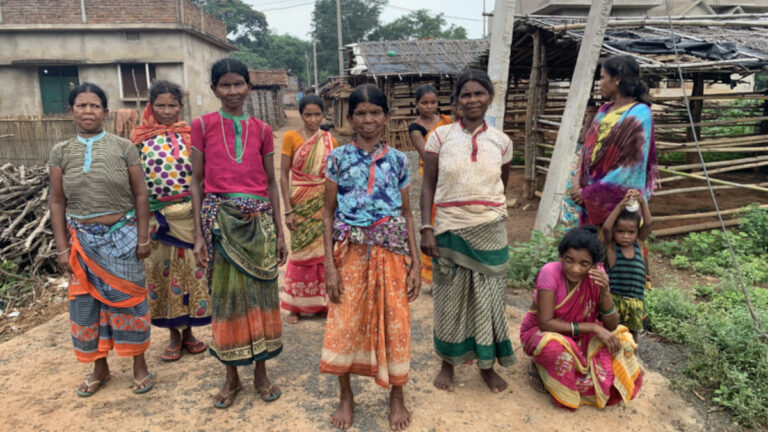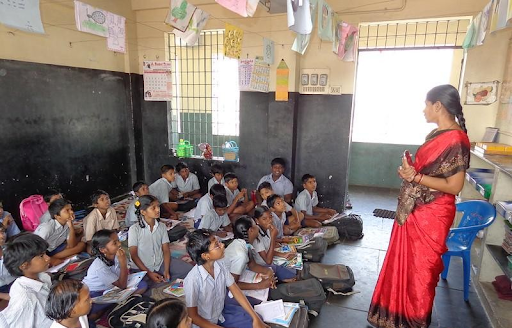Description

Copyright infringement not intended
Picture Courtesy: https://mainbhibharat.co.in/tag/paharia-tribe/
Context: Jharkhand's Pahariya tribe established seed banks to preserve native crops, empowering households and enhancing food self-sufficiency.
Details
- The seed banks initiative undertaken by the Pahariya tribe in Jharkhand to achieve seed independence through community-led seed banks is a transformative attempt aimed at addressing longstanding challenges related to seed access, agricultural productivity, and economic empowerment within tribal communities.
Seed Dependency and Historical Challenges
- Historically, tribal farmers faced significant challenges due to dependency on external sources for seeds. They often obtained seeds from moneylenders or traders who imposed high-interest rates and required excessive seed returns, leading to cycles of debt and compromised agricultural output. This dependency not only affected the economic well-being of farmers but also threatened the preservation of native seed varieties adapted to local environmental conditions.
Establishment of Community-Led Seed Banks
In response to the challenges, community-led seed banks were established in mid-2019 in hilly districts of Pakur and Godda through collaborative efforts of non-profit organisations such as Traidcraft Exchange, Badlao Foundation, and Sathee. These seed banks aimed to empower tribal communities by:
- Conserving and propagating native seed varieties that are resilient to local pests and diseases.
- Providing access to high-quality seeds without the burden of debt or dependency on external seed sources.
- Promoting seed sovereignty and preserving rare indigenous seed varieties that were vanishing from agricultural practices.
Operational Framework of Seed Banks
- The seed banks are managed by women-led committees under the governance of local panchayats, ensuring community ownership and participation.
- Members register with the seed banks by depositing 2.5 kg of indigenous seeds, which serves as a sustainable seed stock for distribution.
- State government programs also contribute seeds to supplement the seed banks' inventory, enhancing the diversity and availability of seeds for farmers.
Impact and Outcomes
The establishment of seed banks has yielded several positive outcomes for tribal farmers:
- Increased agricultural productivity and improved crop yields due to the adoption of native seed varieties.
- Reduction in production costs and economic burdens associated with purchasing seeds from external sources.
- Empowerment of farmers to reclaim control over their agricultural practices and enhance food security for their households.
- Promotion of sustainable farming techniques through training and capacity-building programs provided by partnering non-profit organisations.
Focus on Self-Sufficiency and Food Security
- With immediate seed needs addressed through the seed banks, tribal communities are now focusing on enhancing crop yields and achieving self-sufficiency in food production.
- By fostering resilience and autonomy in agricultural systems, the initiative contributes to long-term food security and economic stability within these marginalised communities.
Future Outlook and Sustainability
Sustaining the impact of seed banks requires continued support from non-profit organisations, government agencies, and community stakeholders. Key aspects for future sustainability include:
- Scaling up the initiative to reach more households and villages within the region.
- Investing in training and capacity-building programs to enhance agricultural practices and promote environmental stewardship.
- Sharing lessons learned and best practices to inspire similar initiatives in other regions facing agricultural challenges and seed dependency.
About Pahariya Tribe
- The Pahariya tribe, also known as the Paharia tribe, is an indigenous community primarily found in the hilly regions of Jharkhand and parts of West Bengal in India. They are known for their unique cultural practices, traditional beliefs, and distinct ways of life.
Habitat
- The Pahariya tribe predominantly inhabits the hilly and forested areas of the Chota Nagpur Plateau in Jharkhand, particularly in the districts of Dumka, Pakur, and Sahebganj.
- They also reside in certain regions of the neighbouring state of West Bengal, such as the districts of Purulia and Bankura.
Origin
- The origin of the Pahariya tribe is believed to be ancient, with roots tracing back to the indigenous communities inhabiting the Chota Nagpur region for centuries. They have a rich history connected with the land and environment of their habitat.
Culture and Practices
- Livelihood: The Pahariya tribe traditionally practised shifting agriculture (slash-and-burn cultivation) in the forested hills. They grow crops like maize, millet, and pulses for subsistence.
- Language: The Pahariya tribe has their own language, which is a part of the Austroasiatic language family. However, due to increasing interactions with mainstream society, many Pahariya people also speak Hindi or Bengali.
- Beliefs and Rituals: Their belief system is animistic, revolving around nature worship and spirits. They have specific rituals and ceremonies associated with agriculture, hunting, and other aspects of their lives.
- Social Structure: The Pahariya tribe traditionally lived in small, close-knit settlements known as 'tolas'. They have a hierarchical social structure with village elders and leaders playing important roles in decision-making.
- Art and Craft: Pahariya artisans are known for their unique handicrafts, including bamboo crafts, basketry, and traditional ornaments.
- Body Tattoo: A distinct characteristic of the Pahariya tribe, particularly among women, is the practice of face and body tattooing. These tattoos are not merely decorative; they hold deep cultural significance and serve as social markers, signifying a woman's marital status, social standing, or belonging to a particular clan.
Source:
Down to Earth
|
PRACTICE QUESTION
Q. The Paharia people traditionally practised a form of agriculture known as:
A) Shifting cultivation
B) Terrace farming
C) Intensive monoculture
D) Large-scale mechanised farming
Answer: A
|









